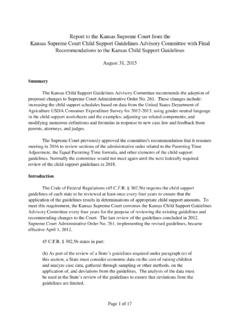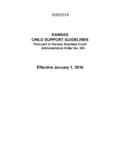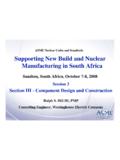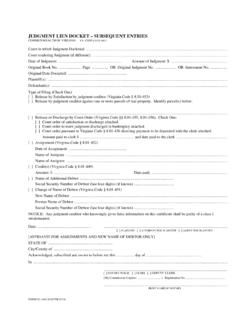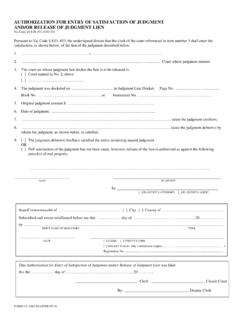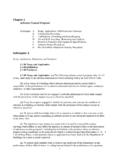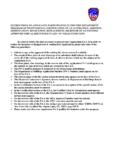Transcription of Rule 4.01 INTERLOCUTORY APPEAL IN CIVIL CASE …
1 Rule INTERLOCUTORY APPEAL IN CIVIL CASE UNDER 60-2102(c) (a) Application; Filing and Service. No later than 14 days after an order is entered from which an APPEAL is sought under 60-2102(c), an application for permission to take the APPEAL must be: (1) filed with the clerk of the appellate courts along with the required docket fee; and (2) served on all attorneys of record and unrepresented parties. (b) Amended Order; Timing. An order may be amended to include the findings required by 60-2102(c) if a motion to amend is served and filed no later than 14 days after the order is filed.
2 If an order is amended under this subsection, an application for permission to take an APPEAL must be served and filed no later than 14 days after the amended order is entered. (c) Docketing of Application. An application under this rule will be docketed as a regular APPEAL to the Court of Appeals. (d) Application; Contents. An application under this rule must: (1) state the relevant facts, including: (A) the facts necessary to understand the question presented; (B) the question itself; (C) the relief sought; (D) the nature of the district court proceedings; and (E) a brief history of the proceedings, including all important dates; (2) state briefly: (A) the controlling question of law involved; (B) the substantial ground for difference of opinion about the controlling question of law.
3 And (C) the basis for belief that an immediate APPEAL may materially advance the ultimate termination of the litigation; (3) include as an attachment a file-stamped certified copy of the order which must contain the findings required under 60-2102(c) from which the APPEAL is sought to be taken; and (4) if an order has been amended under subsection (b), include as attachments file-stamped certified copies of the motion to amend and the amended order. (e) Response. A party may serve and file a response to an application under this rule no later than 7 days after being served with the application.
4 The application and response will be submitted without oral argument. (f) Notice of APPEAL Not Required. A notice of APPEAL need not be filed. The date when the order granting permission to APPEAL is entered serves as the date of the notice of APPEAL for calculating time under these rules. (g) Docketing the APPEAL . If permission to APPEAL is granted, no additional docket fee will be charged, and the record on APPEAL will be filed under the docket number assigned to the application. The APPEAL is deemed docketed when no later than 21 days after the order granting permission to APPEAL is entered the following are filed with the clerk of the appellate courts: (1) a copy of a request for transcript filed under Rule , a written statement that no transcript will be requested, or a certificate of completion of the transcript; and (2) the docketing statement required by Rule [History: Am.]
5 Effective July 1, 1982; Am. effective February 20, 1985; Am. effective February 8, 1994; Am. effective July 1, 1997; Am. effective July 1, 2010; Restyled rule and amended effective July 1, 2012; Am. (a) and (g) effective December 19, 2016.]
